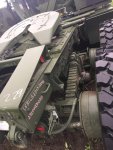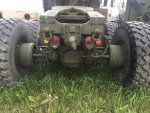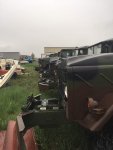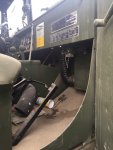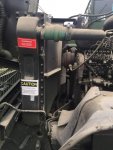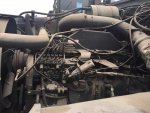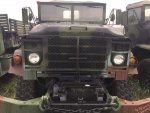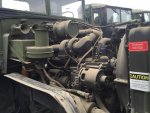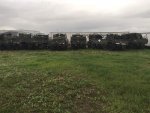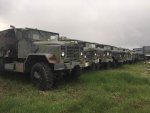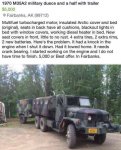Glad to meet you on-line.
Please share what steps you took to get your truck into Canada. There are many interested people who want to know the words and paperwork required.
I tabbed through the previous 5 pages to get a sense of the conversation. Plenty of greetings and introductions. A few pleas for help. Some language barriers. But overall a motivated audience.
One thing I can comment upon is road certification for surplus Canadian military vehicles. Each province has its own rules. My ex'Canadian Forces M151A2 was welded back together from demilitarized pieces. It was inspected, safety certified and licensed in another province. I bought it and changed the plates over after a similar safety inspection. Insurance was a bigger deal because the usual providers don't have risk and hazard charts for anything older than 20 years, so I went with a specialty insurer. The vehicle is now on the road now as another vehicle in the driveway. I could have saved money with a "Historic Vehicle" plate, but there were too many conditions on usage.
The inspection checklist in my place of residence went from a dozen items to nearly a hundred earlier this summer. Some rebuilder friends hustled to get their projects inspected before the rules changed.
http://www.theglobeandmail.com/glob...hat-they-mean-for-car-buyers/article30639699/
The supply of military vehicles has never been very large. Canada tends to buy smaller quantities of vehicles, manage the fleets very closely, then as the wear and tear take over park those that are "Beyond Economical Repair" and cannibalize for parts. Whenever the replacements arrive, the existing fleet is usually so depleted and rusted out, there isn't much of anything left. Often the spares inventories have been completely expended, and replacement sources commercially or in specialized buys. For example, when the air brakes on the MLVW (ie our M35 diesel automatic 6x6) started failing, the whole fleet was grounded until a repair kit was available. Can Joe Civilian buy that kit? No. Likewise, commercial AMC Jeep front fenders appear on M38A1 Jeeps and are considered appropriate if a little funny looking.
This brings me to my next point. Some models were marginal performers at the best of times. The MLVWs have been sold surplus, but with no roadworthiness certificate. Something like, unsafe at any speed. No amount of repairs, proof or arguing with the nice people at the license office will get your MLVW approved for the highways. In frustration, most collectors are importing US M35s just to get wheels underneath. This very cautious safety argument is the reason my M151A2 was quartered with a torch. It is now registered somewhat ambiguously with a serial number on a metal foil sticker, just as if it was a hotrod.
A search on Canadian classified ads will find M37, M38, M38A1, maybe a civilian contract CJ7, maybe an M211, some Iltis', some LSVWs, the odd HLVW and sometimes a CUCV. Not much to choose from, and usually in rough shape. More trailers and spare tires than vehicles.
I mentioned parts inventories. The Iltis is a perfect example. Made in Canada for Canadian job creation. Used hard, they were replaced long after their Best Before date when the replacements arrived. When the central supply depot cleared out its absolute last Iltis shelves, they glutted the market. (Not their fault, they have operational requirements to meet and they don't care about collectors.) The dealers looked at the lots on offer and figured they could make more money diverting their auction purchases straight to the shredders rather than sinking money with no return on investment in sight. Ironically, the guys driving their Iltis'es came around looking for those same parts only a few years later, and have been forced to fabricate a lot of what they need, or have two or three hulks behind the shed for spare parts.




